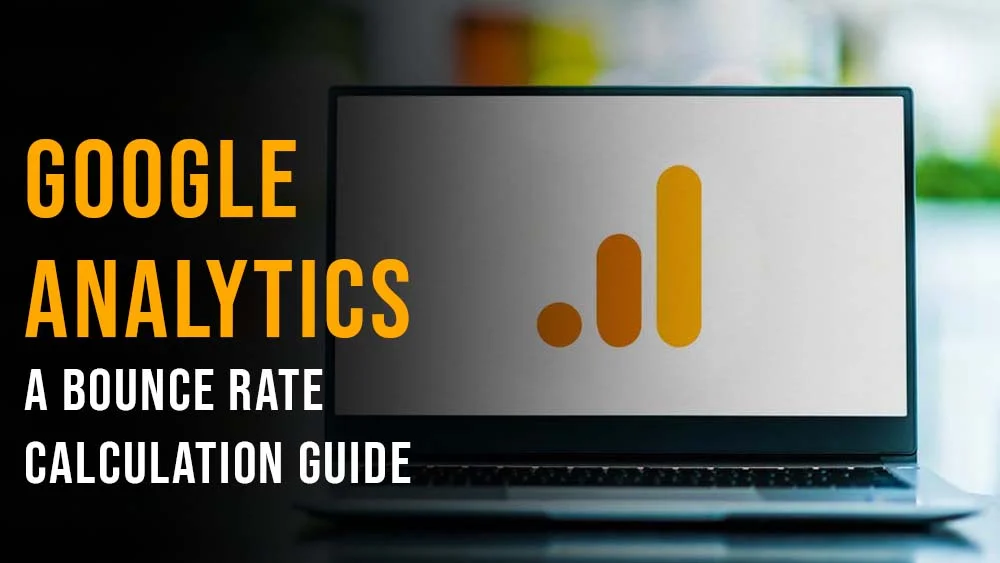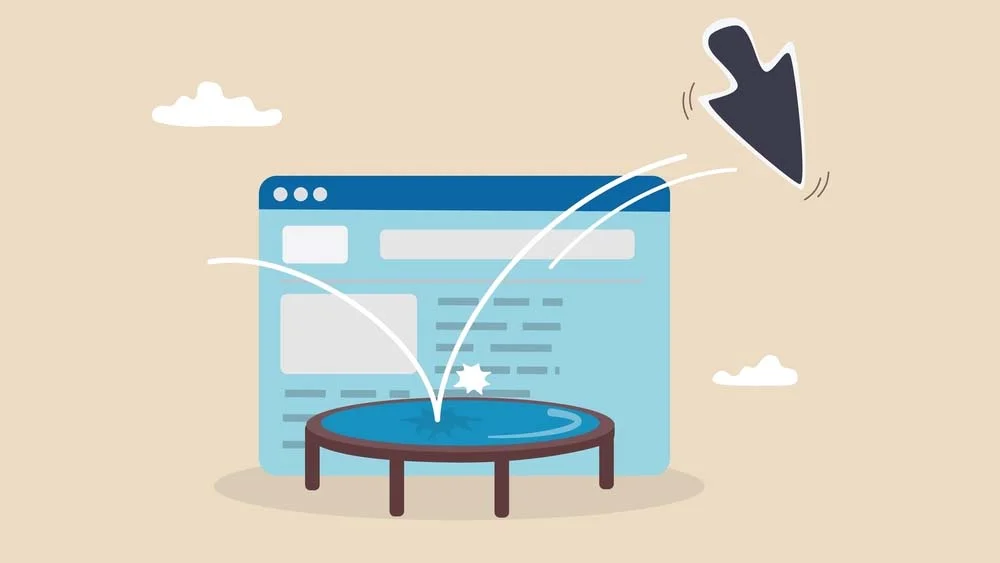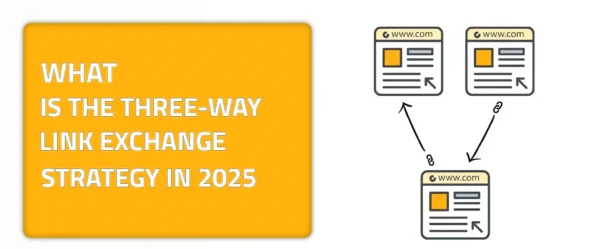In order to have a successful website, you have to make sure that you understand all there is to know about the factors that will make it successful. Your website’s bounce rate is one of those metrics that every website owner should focus their attention on. Let us delve deeper into the topic and understand all there is to know about the bounce rate calculation metric and how beneficial or harmful it is for your website. What does a bounce rate represent, though? Let me answer that for you in a brief, simple way. Bounce rates determine the number or percentage of visitors who visit and leave your website. That is, after viewing only the first page of your website.
SEO specialists consider this metric to play a critical role in indicating the rate of user engagement that you get on your website. Moreover, it indicates the level of effectiveness that your site has in capturing and retaining user attention. The higher the bounce rate of your website increases, the worse the situation is for your website. Why? Delve deeper into this topic to understand and learn all there is to learn about this important website success measurement metric.
Bounce Rate and the Basics You Should Know bout Them
Understanding how your website’s bounce rate can affect it is something that every website owner should know and learn. That is because it helps you greatly improve your website’s overall performance. How can you calculate your site’s bounce rate? I know that I stated in many of my articles that my math may not be the greatest at “mathing” or whatever kids these days say to express that they’re not that good at mathematics; however, I assure you that this is one equation that I won’t mislead you when it comes to its calculation. This metric is calculated by dividing the number of single-page visits by the total number of visits to your site, then multiplying by 100 to get a percentage. Let me walk you through a hypothetical example for a better explanation.
Let’s say that 100 people visit your site, with 40 of them leaving after only viewing one page. Your bounce rate in this scenario would be 40%. Learning that percentage will help you understand the importance of decreasing it and having more views for your website. That is, in order to improve how your site engages visitors and create a strategy that retains them efficiently.
The fact that there are two metrics that sound alike may confuse you if you are familiar with SEO. These two metrics are the bounce rate and the exit rate. I know that they both indicate a website visitor leaving; however, the two actually greatly differ. Below, we will uncover the difference between these two metrics and I will tell you how to not get confused between them.
Bounce Rate vs. Exit Rate: The Difference and Usage.
It’s important not to confuse the bounce rate with the exit rate. While bounce rate measures the percentage of visitors who leave after viewing only one page, exit rate looks at the percentage of visitors who leave after viewing any specific page. That is, regardless of whether they’ve visited other pages beforehand. In other words, a high bounce rate suggests that visitors aren’t finding what they need immediately, while a high exit rate could indicate issues with specific content or pages. Understanding both metrics allows you to get a fuller picture of user behavior and tailor your strategies accordingly. Something that will help you retain and regain users who had potential.
Bounce Rate Calculation: Common Causes of High Bounce Rates
In order to determine the common causes of high bounce rates, you have to ask yourself a very important question. Ask yourself: What makes your website’s visitors stick around and what makes them leave almost instantly after viewing only one page? The first thing to take into consideration is your site’s user experience (UX) design. Ask yourself the following question: Is your site easy for your users to navigate? Is it too complex for them to actually understand? Do they struggle to find what they’re looking for or find it easily? Having a poor user experience (UX) design can actually drive your users away from your site and cause them to leave your site with a trail of vapor.
Another thing to consider is your content. Ask yourself:
- Is my content valuable?
- Is my content relevant?
- Is my content outdated?
- Do I provide high-quality content?
Answering these questions will help you determine how your content plays a role in your website’s bounce rate. That is because if you’re not offering something that is of interest to your niche or target audience, rest assured that they won’t stay. I don’t know about the “rest” part though.
Another main bounce rate factor to focus on is your page’s loading speed. You know how you may get frustrated trying to load a page but getting met with that endless revolving circle? Meanwhile, you can load a video so you are assured that it is not an internet problem, it is solely a site’s problem. People get so frustrated when they’re met with such a situation. Speed matters greatly. Moral of the story? Make sure you take Sonic as your speed reference for your website, if you’re too old and don’t know who Sonic is, Google it.
Bounce Rate Calculation: Additional Factors That Contribute to Your Bounce Rate Level
Meta data or meta description. Two words that you should know if you’re familiar with SEO terminologies. If not, no problem; I got you. Your meta description is what appears on the outside of a link on SERPs when you Google or search for something. You know that little link you usually click? The description of the link below is what we SEO kids of the generation call a meta description.
There’s the issue of misleading meta descriptions or titles. Make sure that you’re accurately representing your content in search engine results. Because if you’re not, users might click in expecting one thing and leave disappointed when they don’t find it. Another major thing to consider is mobile optimization.
Ask yourself, I know you did a lot of asking but bear with me and ask yourself: Is your site mobile-friendly? With the majority of web traffic coming from mobile devices, a site that isn’t optimized for mobile is almost guaranteed to see higher bounce rates. Seriously, who isn’t on their phone in this digitalized era of technological advancements? Dead people who went to world wars is the only answer that comes to mind.
The Impact of Bounce Rates on Your Website’s Performance
Bounce rates can have a significant impact on your website’s overall performance, influencing several key areas:
- Search Engine Rankings: High bounce rates can signal to search engines that your site may not be providing valuable content. This could lead to lower rankings.
- User Engagement and Conversion Rates: A high bounce rate often indicates that visitors aren’t finding what they’re looking for, leading to low engagement and fewer conversions. This could mean fewer newsletter sign-ups, purchases, or inquiries, depending on your dreams.
- Brand Perception: Consistently high bounce rates can harm your brand’s reputation. Visitors might associate your site with poor quality or irrelevance. Something you, me and the internet wouldn’t want. This negative perception can spread, affecting word-of-mouth recommendations and diminishing the trustworthiness of your brand.
Bounce Rate Calculation: Strategies That Can Help You Reduce Bounce Rates
Want a practical solution for your problem? Are you praying for a magical wand from Ollivanders as well? Here are some strategies that you can use to reduce your bounce rates. It’s not exactly a magical want but it’s better than nothing, right? Start by focusing on your website’s load speed. A few ways to improve load speed include optimizing images, using a content delivery network (CDN), and minimizing code. Next, consider the relevance and quality of your content. Are you delivering what visitors expect? If not, they’ll bounce. Make sure your content matches the intent behind your visitors’ search queries and provides real value.
What about mobile users? If your site isn’t designed or optimized for mobile, you’re losing out. A responsive design ensures that your site looks great and functions well on all devices. Another key strategy is the use of clear and compelling calls-to-action (CTAs). Ask yourself: Are your CTAs guiding visitors to the next step? If not, revise them to be more direct and engaging. Finally, don’t overlook internal linking. Properly placed internal links help guide visitors through your site, reducing the likelihood they’ll leave after one page.
Examples of Bounce Rate Reduction: What Should You Do?
As numerous successful case studies have shown, lowering bounce rates can drastically improve a website’s performance. I know that the less you have of something, the not so much better. However, in this case, settle for less. Embrace the reduction of numbers. For example, an e-commerce site struggled with a 70% bounce rate due to slow page load times and unclear navigation. By optimizing images, improving server response time, and redesigning the site’s layout for easier navigation, the bounce rate dropped to 40%, leading to a 20% increase in conversions.
Another example comes from a blog that saw a significant bounce rate decrease after revamping its content strategy to focus on more relevant and engaging topics. This shift not only kept visitors on the site longer but also boosted social shares and returning visitors.
Conclusion
Bounce rate is a vital metric that offers insights into how well your website engages visitors. By understanding its causes and implementing strategies to reduce it—such as improving site speed, enhancing content relevance, and optimizing for mobile—you can positively impact your site’s performance. If you wish to delve deeper into the world of SEO and its updates, make sure to give linkexchange.ai a glance and take a dive into our SEO realm of success.











